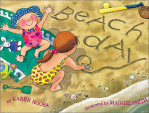It’s not too late to find a costume for your little one to show-off a growing love of the ocean for this Halloween! Here are five adorable costumes I found on Etsy that are worth some serious consideration. (The only reason I was looking was because I keep checking to see if anyone has made a horseshoe crab costume yet, no luck.)
… and 2 bonus costumes for the canine family member.








































What people are saying …